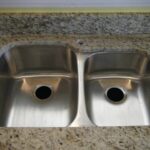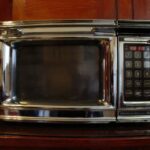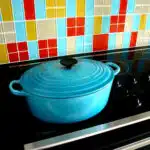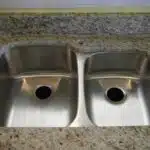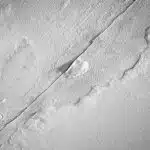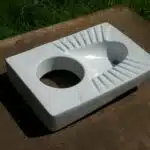As a copper sink cleaning expert, I have seen countless homeowners struggle with maintaining the luster and shine of their copper sinks. While copper is a durable and long-lasting material for sinks, it requires special care and attention to keep it looking its best. Whether you are a homeowner who recently installed a copper sink or simply seeking ways to improve your cleaning routine, this article will provide a comprehensive guide on how to clean a copper sink.
Copper sinks offer an elegant and rustic touch to any kitchen or bathroom. However, without proper maintenance, they can quickly lose their appeal and become tarnished and discolored. In this article, we will explore the various cleaning methods that can be used to maintain the beauty of your copper sink, including natural remedies and commercial products. With these tips in mind, you can ensure that your copper sink remains sparkling clean for years to come.
Understanding Copper As A Material
Copper sinks are a popular choice for homeowners looking to add a touch of elegance to their kitchen. Copper is a malleable metal that can be easily shaped and molded, making it an ideal material for sink manufacturing. It’s also naturally resistant to bacteria and corrosion, which makes it perfect for use in the kitchen where hygiene is paramount.
One of the benefits of copper as a kitchen material is its natural antibacterial properties. Copper has been proven to kill 99.9% of bacteria within two hours of contact. This makes it an excellent choice for those who want to maintain high standards of hygiene in their kitchens. Additionally, copper sinks are easy to clean and maintain – simply wipe them down with a soft cloth and mild soap.
Copper sinks have a unique aesthetic appeal that sets them apart from other materials like stainless steel or porcelain. They have a warm, rustic feel that adds character and charm to any kitchen. However, like any material, copper sinks can experience issues over time that require attention. In the next section, we’ll discuss some common issues with copper sinks and how they can be resolved.
Common Issues With Copper Sinks
One common issue with copper sinks is the tendency to develop stains over time. Since copper is a porous material, it can easily absorb liquids and other substances that come in contact with its surface. This includes everything from water to soap, which can leave unsightly stains on your sink if not cleaned properly. To prevent these stains from forming, it’s important to wipe down your sink after each use and avoid leaving standing water or soap residue on its surface.
Another issue that many copper sink owners face is hard water buildup. Hard water contains high levels of minerals like calcium and magnesium, which can adhere to your sink’s surface and form stubborn deposits over time. These deposits can be difficult to remove and may require harsh chemicals or scrubbing to get rid of completely. To tackle hard water buildup, consider investing in a water softener or using a specialized cleaner designed for removing mineral deposits from copper surfaces.
By preventing stains and tackling hard water buildup, you can keep your copper sink looking as good as new for years to come. However, it’s important to remember that regular maintenance is key when it comes to keeping any type of sink clean and functional. In the following section, we’ll discuss some simple daily maintenance tips that will help you keep your copper sink in top shape without requiring too much effort or time on your part.
Daily Maintenance Tips
As a copper sink cleaning expert, I know how important it is to maintain the luster of your sink on a daily basis. One of the most effective ways to do this is by wiping down the sink with a soft cloth after each use. This simple step can prevent water spots and stains from forming, keeping your sink looking shiny and new for longer.
Another way to keep your copper sink looking its best is by waxing it regularly. Applying a thin layer of wax once every few months can provide an extra layer of protection against scratches and other damage. Not only does waxing help prevent damage, but it also adds a beautiful shine to the surface of the sink.
In addition to daily maintenance and regular waxing, there are also some preventative measures you can take to avoid scratches on your copper sink. First and foremost, avoid using abrasive materials or harsh chemicals when cleaning your sink. Instead, opt for gentle cleaners specifically designed for copper surfaces. You should also be careful not to place sharp or heavy objects directly on the surface of the sink, as this can cause scratching and other damage over time.
By following these simple daily maintenance tips, you can keep your copper sink looking beautiful for years to come. However, if you do happen to notice any scratches or other damage on your sink, don’t worry – there are still plenty of ways to restore its shine and beauty. In the next section, we’ll explore how vinegar and salt can be used as an effective cleaning solution for even the toughest stains on your copper sink.
Using Vinegar And Salt For Cleaning
After understanding the importance of daily maintenance tips for your copper sink, it is time to delve deeper into some cleaning hacks that will leave your sink looking spotless. One of the natural solutions for cleaning a copper sink is using vinegar and salt. The combination of vinegar’s acidic nature and salt’s abrasive properties creates a potent solution that effectively removes dirt, grime and tarnish from your sink.
To use vinegar and salt for cleaning your copper sink, you will need a spray bottle, white vinegar and table salt. Start by mixing equal parts of vinegar and water in the spray bottle. Sprinkle a generous amount of table salt on the surface of your sink then spray the solution on top of it. Let it sit for about 15 minutes before scrubbing with a soft-bristled brush or sponge. Rinse thoroughly with warm water and dry with a clean cloth.
Another effective method for cleaning your copper sink is using lemon juice and baking soda. This method is ideal if your sink has stubborn stains or tarnish that won’t come off easily. Lemon juice is an excellent natural cleaner that breaks down dirt and grime while baking soda acts as an abrasive agent to remove tough stains without damaging the surface of your sink.
Transition: While vinegar and salt are great natural solutions for cleaning your copper sink, lemon juice and baking soda offer another effective method that can be used in addition to or instead of the former method. Let us explore how to effectively use this combination to get rid of tough stains on your copper sink.
Lemon Juice And Baking Soda Method
For those who want a safe and natural way to clean their copper sink, the lemon juice and baking soda method is an excellent option. This DIY copper sink cleaner is non-toxic, making it not only safe for the environment but also for your family. With this natural cleaning solution, you don’t have to worry about harsh chemicals that could damage your sink or affect your health.
To use this method, start by sprinkling a generous amount of baking soda on your damp sponge. Scrub the entire surface of your copper sink with the sponge until it’s sufficiently clean. Next, cut a lemon in half and squeeze its juice over the sink’s surface while rubbing it with the same sponge. Allow the mixture to sit on the surface of your sink for about 15 minutes before rinsing off with warm water.
The combination of lemon juice and baking soda makes an effective cleaning duo because they both have acidic properties that break down grime and stains. However, if you’re dealing with tougher stains or tarnish marks that won’t budge, there’s another method you can try: hydrogen peroxide and flour.
Hydrogen Peroxide And Flour Method
- In order to clean a copper sink using the Hydrogen Peroxide and Flour method, it is necessary to gather supplies including hydrogen peroxide, flour, soft cloths, and a scrubbing sponge.
- To begin, sprinkle a generous amount of flour onto the sink and spread it evenly with a soft cloth.
- Next, pour the hydrogen peroxide onto the sink, making sure to cover the entire surface.
- Allow the mixture to sit for 10-15 minutes, then scrub the sink with a scrubbing sponge.
- Once the sink is clean, rinse it off with warm water.
- Finally, dry the sink with a soft cloth to prevent streaks and restore the copper’s natural shine.
Gather Supplies
To achieve a sparkling clean copper sink, one must gather the necessary supplies beforehand. As a copper sink cleaning expert, I recommend using the hydrogen peroxide and flour method for a natural and effective cleaning solution. Where to buy eco-friendly options for supplies? Look no further than your local health food store or online retailers such as Amazon or Thrive Market.
When organizing your cleaning tools and materials, it’s important to have everything in one place for easy access. Keep a designated basket or caddy for all your cleaning products, including hydrogen peroxide, flour, vinegar, and baking soda. It’s also recommended to have separate cleaning cloths for different surfaces to avoid cross-contamination.
In addition to hydrogen peroxide and flour, other supplies needed for this method include a scrub brush or sponge, lemon juice (optional), and warm water. With these eco-friendly options readily available and your tools organized, you’ll be on your way to achieving a spotless copper sink in no time.
Clean Sink
After installing a copper sink, it’s important to maintain its cleanliness and shine. A clean sink not only looks great but also prevents the buildup of harmful bacteria. As a copper sink cleaning expert, I recommend using the hydrogen peroxide and flour method for an effective and natural cleaning solution.
Not only is this method eco-friendly, but it also has numerous benefits for your copper sink. Hydrogen peroxide is a powerful disinfectant that kills germs while flour acts as a gentle abrasive to remove stains and grime without scratching the surface. This method is safe to use on copper sinks and won’t damage the patina or finish.
To achieve a clean sink using this method, gather your supplies including hydrogen peroxide, flour, vinegar, baking soda, lemon juice (optional), warm water, and designated cleaning cloths. By keeping everything in one place and organized, you’ll have easy access to your tools whenever you need them. With regular maintenance using this natural cleaning solution, your copper sink will continue to shine for years to come.
Rinse Clean
Using specialized cleaners is important when maintaining copper sinks over time. The hydrogen peroxide and flour method is an excellent natural cleaning solution for keeping your copper sink looking its best. However, one crucial step that should not be overlooked is rinsing the sink clean after using this method.
Rinsing the sink ensures that all of the cleaning solution and residue are removed, preventing any potential damage to the patina or finish of your copper sink. To rinse your sink properly, use warm water and a designated cleaning cloth to wipe away any remaining particles. It’s essential to ensure that no leftover cleaning solution is left behind as it can cause discoloration or corrosion over time.
Incorporating regular rinsing into your copper sink maintenance routine will help prolong its life span and keep it looking beautiful for years to come. By following these simple steps, you’ll be able to maintain a sparkling clean copper sink without the use of harsh chemicals or damaging abrasives.
Ketchup Method For Stains
After using the hydrogen peroxide and flour method, it is important to maintain your copper sink regularly. Proper copper sink maintenance will prevent stains and tarnishing from occurring in the first place. One way to do this is by wiping down your sink after each use with a soft cloth. Avoid abrasive materials like steel wool or harsh chemicals that can damage the surface of your sink.
If you do end up with stains on your copper sink, there are other methods you can try beyond the hydrogen peroxide and flour mixture. For example, ketchup has been known to remove stains from copper sinks. Simply apply a small amount of ketchup to a soft cloth and rub it into the affected area. Let it sit for a few minutes before rinsing with warm water.
However, if these DIY methods don’t work for you, there are commercial copper cleaners available on the market that can help. These cleaners are specifically designed for use on copper surfaces and can effectively remove tough stains without damaging your sink’s finish. Just be sure to follow the manufacturer’s instructions carefully and test in an inconspicuous area before applying it to your entire sink. With regular maintenance and proper stain removal techniques, your copper sink can remain beautiful and functional for years to come.
Transition: While commercial copper cleaners may be effective, they often contain harsh chemicals that can be harmful to both you and the environment. As such, it is important to consider alternative cleaning methods that are safe for both you and your home in addition to being effective at removing stains from copper sinks.
Commercial Copper Cleaners
When it comes to cleaning copper sinks, one may feel that commercial copper cleaners are the best way to go. They promise a sparkling clean and polished finish that is hard to achieve with natural cleaning alternatives. And while it is true that commercial cleaners can be effective, it’s essential to consider the potential risks they pose.
Many commercial copper cleaners contain harsh chemicals and acids that can damage the surface of your sink. If used excessively or improperly, these cleaners can etch the copper and cause permanent damage. Additionally, some commercial cleaners may contain ingredients that can harm the environment or even pose health risks if ingested or inhaled.
That being said, there are times when natural cleaning alternatives may not produce the desired results. In such cases, it’s crucial to use caution when selecting a commercial cleaner and read all instructions carefully before use. When using any chemical-based cleaner, always wear gloves and protective eyewear to avoid skin irritation or eye damage.
To avoid abrasive cleaners altogether is an excellent way to maintain your copper sink’s longevity. Instead of relying on harsh chemicals, try using natural remedies like lemon juice or baking soda mixed with water as a non-abrasive alternative. These alternatives will not only effectively disinfect your sink but also protect your family members’ health and well-being.
Avoiding Abrasive Cleaners
Using harsh chemicals and abrasive cleaners can damage the surface of your copper sink. Copper is a soft metal that can easily scratch, dent or tarnish, so it is essential to avoid using any harsh cleaning agents that could cause permanent damage. Instead, opt for eco-friendly alternatives such as white vinegar, baking soda, and lemon juice.
White vinegar is an excellent natural cleaning agent that can help remove stains and tarnish from your copper sink. Mix one part water with one part white vinegar and apply it to the surface of your copper sink using a soft cloth or sponge. Gently scrub away any dirt or grime before rinsing thoroughly with warm water. Avoid leaving the solution on the surface for too long as it may cause damage or discoloration.
Baking soda and lemon juice are also effective eco-friendly alternatives for cleaning copper sinks. Create a paste by mixing equal parts of baking soda and lemon juice, then apply it to the surface of your sink using a soft cloth or sponge. Gently scrub away any dirt or grime before rinsing thoroughly with warm water. These natural ingredients will not only clean your copper sink but will also leave it looking shiny and new.
Transition: Now that you have learned how to clean your copper sink without damaging its delicate surface, let’s move on to polishing your sink to give it a beautiful shine.
Polishing Your Copper Sink
After cleaning your copper sink, the next step is to polish it. Polishing your copper sink requires some extra effort, but the results are well worth it as it will restore its shine and keep it looking great for years to come. One option is DIY polishing, which involves using common household items like vinegar, lemon juice, or baking soda mixed with salt to create a natural polish.
Alternatively, you can seek professional services for your copper sink’s polishing needs. Professional services may be more expensive than DIY methods, but they offer a deeper level of care that cannot be achieved through other means. Experts use commercial-grade products that are specifically formulated to treat copper surfaces and remove tarnish effectively.
Regardless of the method you choose, here are three essential tips to keep in mind when polishing your copper sink:
- Be gentle: Copper is a soft metal that can easily scratch or dent if not handled carefully.
- Avoid harsh chemicals: Abrasive cleaners or acidic substances can damage the finish of your sink over time.
- Dry thoroughly: After polishing, ensure that you dry the sink completely with a soft cloth.
By following these tips, you can achieve a polished finish on your copper sink without causing any harm to its surface.
Moving forward, protecting your copper sink from damage requires ongoing maintenance and care. In the next section, we will discuss how to maintain your copper sink’s shine by avoiding common mistakes that could impact its longevity.
Protecting Your Copper Sink From Damage
A copper sink is a work of art that adds warmth and elegance to any kitchen or bathroom. It is an investment that requires proper care to ensure its longevity. Preventing corrosion and discoloration is key to maintaining the beauty of your copper sink.
To prevent corrosion, it is important to choose the right copper sink cleaner. Not all cleaners are created equal, and some can actually damage your sink. Avoid harsh chemical cleaners that contain bleach or ammonia, as these can cause discoloration and even corrode the surface of your sink. Instead, opt for a gentle cleaner specifically designed for copper sinks.
In addition to choosing the right cleaner, there are other steps you can take to prevent damage to your copper sink. Avoid leaving acidic foods or liquids in the sink for extended periods of time, as these can eat away at the patina finish. Use a soft cloth or sponge to clean your sink instead of abrasive materials like steel wool or scrub brushes. By following these tips, you can keep your copper sink looking beautiful for years to come.
As important as it is to know how to clean a copper sink properly, preventing future tarnish and discoloration is equally crucial. In the next section, we will discuss steps you can take to protect your copper sink from everyday wear and tear.
Preventing Future Tarnish And Discoloration
Preventing Tarnish and Discoloration: Tips and Tricks
While cleaning your copper sink is crucial for maintaining its shine, preventing tarnish and discoloration is equally important. Here are some tips and tricks you can use to keep your copper sink looking great for the long term.
Firstly, avoid exposing your copper sink to harsh chemicals or abrasive materials such as bleach, ammonia, or steel wool. These substances can cause serious damage to the surface of your sink, leading to tarnishing and discoloration. Instead, opt for gentle cleaners that are specifically designed for cleaning copper surfaces.
Secondly, make sure to dry your copper sink thoroughly after each use. Leaving water droplets on the surface of your sink can lead to unsightly water stains and even rust spots over time. Use a soft cloth or towel to gently wipe down the surface of your sink after every use.
Lastly, consider applying a protective coating or wax to your copper sink regularly. This will help prevent tarnishing and discoloration by creating a barrier between the surface of your sink and any harmful elements it may come into contact with.
By following these tips and tricks for long-term maintenance and care, you can keep your copper sink looking shiny and new for years to come.
To maintain the overall look of your kitchen or bathroom space, it’s important not just to keep your copper sink clean but also pay attention to other accessories like faucets. In the subsequent section, we’ll discuss how you can effectively clean faucets while minimizing the risk of damage.
Cleaning Faucets And Accessories
Now that you have learned how to prevent future tarnish and discoloration on your copper sink, it’s time to move on to the next step: cleaning faucets and accessories. But before we delve into that, let’s take a moment to appreciate how much of a difference a clean sink can make in your home. A well-maintained copper sink is not only beautiful but also hygienic. It’s important to keep it clean not just for aesthetic reasons but also to prevent the growth of harmful bacteria.
Cleaning showerheads and maintaining soap dispensers are two essential tasks when it comes to keeping your copper sink clean. Showerheads can accumulate mineral deposits over time, which can cause them to become clogged or spray water unevenly. To clean them, simply mix equal parts vinegar and water in a plastic bag, attach it securely around the showerhead with a rubber band, and let it soak for an hour before rinsing thoroughly. Soap dispensers can also become dirty over time due to soap residue buildup. To prevent this, wipe them down regularly with a damp cloth and mild detergent.
In conclusion, keeping your copper sink clean involves more than just wiping it down with a cloth. Maintaining faucets and accessories is crucial in preventing unnecessary wear and tear on your sink while keeping it hygienic. Now that you have mastered the basics of maintaining your copper sink’s cleanliness let’s move on to deep cleaning techniques that will keep your sink looking brand new for years to come.
Deep Cleaning Your Copper Sink
- To remove rust from a copper sink, use a rust remover or a paste of cream of tartar and lemon juice.
- To polish a copper sink to shine, use a copper cleaner and polish that is designed specifically for copper surfaces.
- To protect a copper sink from tarnish, apply a thin coat of wax or lacquer to the sink’s surface.
- Copper sinks may also be treated with a protective sealant to prevent tarnishing.
- To deep clean a copper sink, use a non-abrasive, soft cloth and a mild detergent.
- To maintain the luster of a copper sink, regularly rinse with clean water and dry with a soft cloth.
Removing Rust
The sight of rust on your copper sink can be an eyesore, and if left unchecked, it may lead to corrosion. Therefore, removing rust is a crucial part of deep cleaning your copper sink. To remove rust from your sink, you will need a few basic items such as white vinegar, a scrub brush or sponge, baking soda, and lemon juice.
Firstly, pour some white vinegar onto the affected area and let it sit for about 30 minutes. This allows the vinegar to penetrate the rust and break it down. Next, use a scrub brush or sponge to gently scrub the area until all the rust is removed. Rinse with water and dry thoroughly using a soft cloth.
Secondly, mix equal parts of baking soda and lemon juice to form a paste. Apply this paste onto the affected area and let it sit for about 10-15 minutes. Scrub gently with a scrub brush or sponge until all the rust is removed. Rinse with water and dry thoroughly using a soft cloth.
In conclusion, removing rust from your copper sink is essential in preventing corrosion and maintaining its beauty. By following these simple steps using basic household items such as white vinegar, baking soda, and lemon juice, your copper sink will be restored to its former glory in no time!
Polishing To Shine
To achieve a deep clean on your copper sink, removing rust is only the first step. The next step is to polish it to a shine. DIY polishing can be done using common household items such as salt, flour, and vinegar. However, if you want a more professional finish, you may opt for services offered by experts.
To start with DIY polishing, mix equal parts of salt and flour in a bowl. Slowly add vinegar until the mixture forms a paste. Apply this paste onto the sink’s surface and let it sit for about 15 minutes. Afterward, rinse with water and dry thoroughly using a soft cloth. This method works best for sinks that have minor scratches or are slightly dull.
For those who prefer to have their copper sinks polished by professionals, there are several options available in the market. Some companies offer coating services that protect the sink’s surface from tarnishing and provide long-lasting shine. Others offer non-toxic polishing solutions that are safe for both people and the environment. Before choosing any service provider, make sure to check their reviews and credentials to ensure quality workmanship.
By removing rust and polishing your copper sink to a shine regularly, you can prolong its lifespan while maintaining its beauty. Whether you choose to do it yourself or hire professionals’ services, always prioritize safety and use mild cleaning agents that will not damage your sink’s surface over time.
Protecting From Tarnish
To achieve a deep clean on your copper sink, understanding oxidation and the importance of protecting it from tarnish is crucial. Copper naturally oxidizes when exposed to air and moisture, which can lead to the formation of unsightly green or brown spots on the surface. To prevent this from happening, applying protective coatings is necessary.
One way to protect your copper sink from tarnish is by using a wax-based product specifically designed for copper surfaces. These products create a barrier between the metal and its environment, preventing water and air from coming into contact with the surface. This helps slow down oxidation and prolongs the life of your sink’s finish.
Another option is to apply a clear lacquer coating to your sink’s surface. This method creates a hard, transparent layer that shields your sink from moisture and other environmental factors that contribute to tarnishing. However, it is essential to note that applying lacquer requires proper ventilation and safety precautions due to its toxic nature. Hiring professionals who specialize in copper sink maintenance may be the best course of action if you opt for this method.
Troubleshooting Common Cleaning Issues
Cleaning a copper sink can be a daunting task, especially if you encounter common cleaning issues. One of the most common problems is water spots that can make your sink look dull and unattractive. To tackle this issue, mix equal parts of vinegar and water in a spray bottle and apply it on the affected area. Let it sit for a few minutes before wiping it off with a soft cloth.
Another issue that you may face when cleaning your copper sink is stubborn stains or tarnish. While commercial cleaners are readily available, there are several DIY cleaning solutions that you can try using household items such as lemon juice, baking soda, and salt. Mix these ingredients into a paste and apply to the affected area using a soft cloth. Rinse off with warm water after 15-20 minutes.
Eco-friendly options are also available for those who prefer to use natural products. For instance, you can use an all-purpose cleaner made from distilled white vinegar, baking soda, and essential oil of your choice. This cleaner not only cleans but also disinfects and deodorizes your copper sink without leaving any harmful chemical residue.
By following these troubleshooting tips, you can keep your copper sink looking clean and shiny while also being mindful of the environment by opting for eco-friendly options. Remember to always test any solution on a small area first before using it on the entire sink surface to avoid damaging or discoloring your copper sink.
Conclusion
Copper sinks are a beautiful and unique addition to any kitchen or bathroom, but they require proper care and maintenance to keep them looking their best. As an expert in copper sink cleaning, it is important to understand the properties of copper as a material and how it reacts to different substances. Common issues such as tarnishing and discoloration can be prevented with proper daily maintenance and regular deep cleaning.
Daily maintenance tips include using gentle soap and water, drying the sink after each use, and avoiding abrasive cleaners or metal scrubbers. Vinegar and salt or lemon juice and baking soda can be used for regular cleaning, while preventative measures such as waxing the sink or using a protective coating can help avoid future tarnish.
Cleaning faucets and accessories is also important in maintaining the overall appearance of a copper sink. Deep cleaning should be done periodically to remove any buildup or stubborn stains. Troubleshooting common cleaning issues such as water spots or scratches can also help ensure that your copper sink stays in top condition.
In conclusion, caring for a copper sink is like tending to a garden; with proper attention and care it will flourish into something beautiful. By following these simple tips and techniques, you can enjoy the unique beauty of your copper sink for years to come. Just like plants need sunlight and water, your copper sink needs daily maintenance and occasional deep cleaning to maintain its luster. Remember that prevention is key, so take the time to protect your investment with regular upkeep.
Image Credits
- “148 – Large Copper Sink” by Metal Sheets Limited (featured)



